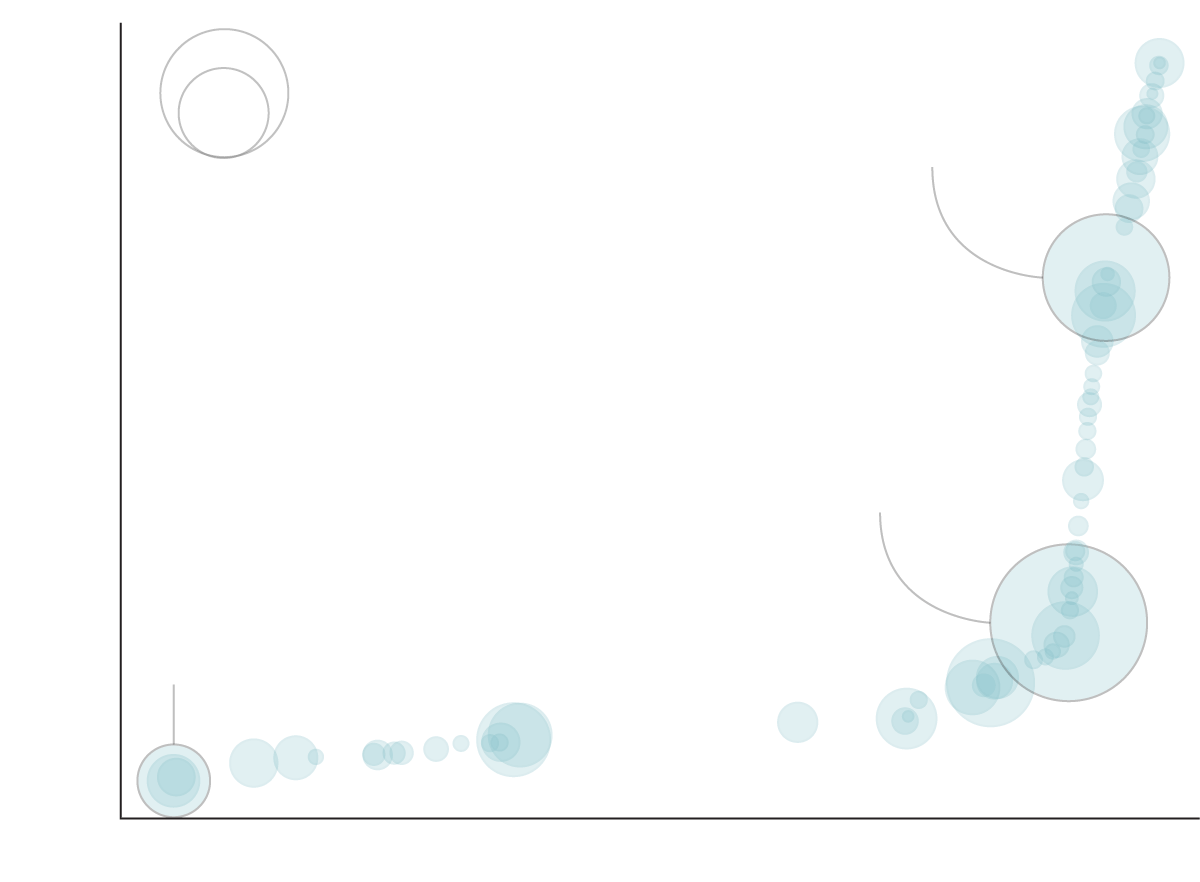Though a larger coalition of fact checkers has disbanded, a team of students and researchers at the University of Washington in Seattle is still working to document how lies online threaten to undermine this year’s presidential race.
Inside two small, windowless conference rooms on the campus of the University of Washington in Seattle, a group of students and researchers is prowling the internet to track the rumors and conspiracy theories eroding faith in this year’s presidential election.
No, there are not more registered voters in Michigan than citizens. No, Iran did not hack a voter list to cast ballots pretending to be overseas Americans.
And no, the Pentagon did not ease its rules on the use of lethal force against citizens to shut down civic unrest — “just weeks before the most consequential election in history,” as one post on Telegram noted conspiratorially.
“We can’t possibly track them all down,” Kate Starbird, a founder of the university’s Center for an Informed Public, said of the rumors, which began with a steady drip in recent weeks and have now turned into a torrent.
Four years ago, the center’s researchers were part of a larger coalition formed to debunk claims by President Donald J. Trump and others that the 2020 election was rigged. At its peak in the weeks around that vote, the effort had 120 analysts working around the clock to monitor disinformation.
In the last two years, however, that work came under a concerted political and legal attack from conservatives who portrayed it as a secret scheme to censor critics.Called the Election Integrity Partnership, the coalition has since collapsed under the weight of that attack, smothered by civil lawsuits, Congressional subpoenas and records requests that have been time consuming and costly.
How a Falsehood About the Pentagon Spread on X
A directive by the Department of Defense sparked a conspiracy theory that the government was planning to use force against Americans.
#g-dod1-box {
max-width:600px;
}
#g-dod1-box ,
#g-dod1-box .g-artboard {
margin:0 auto;
}
#g-dod1-box p {
margin:0;
}
#g-dod1-box .g-aiAbs {
position:absolute;
}
#g-dod1-box .g-aiImg {
position:absolute;
top:0;
display:block;
width:100% !important;
}
#g-dod1-box .g-aiSymbol {
position: absolute;
box-sizing: border-box;
}
#g-dod1-box .g-aiPointText p { white-space: nowrap; }
#g-dod1-Artboard_1 {
position:relative;
overflow:hidden;
}
#g-dod1-Artboard_1 p {
font-family:nyt-franklin,arial,helvetica,sans-serif;
font-weight:regular;
line-height:19px;
opacity:1;
letter-spacing:0em;
font-size:16px;
text-align:left;
color:rgb(0,0,0);
text-transform:none;
padding-bottom:0;
padding-top:0;
mix-blend-mode:normal;
font-style:normal;
height:auto;
position:static;
}
#g-dod1-Artboard_1 .g-pstyle0 {
font-weight:700;
height:19px;
text-align:right;
top:1.3px;
position:relative;
}
#g-dod1-Artboard_1 .g-pstyle1 {
font-weight:700;
line-height:14px;
font-size:12px;
text-align:right;
text-transform:uppercase;
}
#g-dod1-Artboard_1 .g-pstyle2 {
font-weight:300;
text-align:right;
}
#g-dod1-Artboard_1 .g-pstyle3 {
font-weight:300;
height:19px;
opacity:0.5;
top:1.3px;
position:relative;
}
#g-dod1-Artboard_1 .g-pstyle4 {
font-weight:300;
line-height:14px;
height:14px;
opacity:0.5;
font-size:12px;
text-align:center;
top:1px;
position:relative;
}
#g-dod1-Artboard_1 .g-pstyle5 {
font-weight:300;
height:19px;
text-align:right;
top:1.3px;
position:relative;
}
#g-dod1-Artboard_1 .g-pstyle6 {
font-weight:700;
line-height:14px;
font-size:12px;
text-transform:uppercase;
}
#g-dod1-Artboard_1 .g-pstyle7 {
font-weight:300;
}
#g-dod1-Artboard_1 .g-pstyle8 {
font-weight:300;
height:19px;
text-align:center;
top:1.3px;
position:relative;
}
#g-dod1-Artboard_2 {
position:relative;
overflow:hidden;
}
#g-dod1-Artboard_2 p {
font-family:nyt-franklin,arial,helvetica,sans-serif;
font-weight:regular;
line-height:18px;
opacity:1;
letter-spacing:0em;
font-size:16px;
text-align:left;
color:rgb(0,0,0);
text-transform:none;
padding-bottom:0;
padding-top:0;
mix-blend-mode:normal;
font-style:normal;
height:auto;
position:static;
}
#g-dod1-Artboard_2 .g-pstyle0 {
font-weight:700;
height:18px;
font-size:14px;
text-align:right;
top:1.1px;
position:relative;
}
#g-dod1-Artboard_2 .g-pstyle1 {
font-weight:700;
font-size:12px;
text-align:right;
text-transform:uppercase;
}
#g-dod1-Artboard_2 .g-pstyle2 {
font-weight:300;
text-align:right;
}
#g-dod1-Artboard_2 .g-pstyle3 {
font-weight:300;
height:18px;
font-size:14px;
text-align:right;
top:1.1px;
position:relative;
}
#g-dod1-Artboard_2 .g-pstyle4 {
font-weight:300;
line-height:19px;
height:19px;
opacity:0.5;
top:1.3px;
position:relative;
}
#g-dod1-Artboard_2 .g-pstyle5 {
font-weight:300;
line-height:11px;
height:11px;
opacity:0.5;
font-size:9px;
text-align:center;
top:0.7px;
position:relative;
}
#g-dod1-Artboard_2 .g-pstyle6 {
font-weight:700;
font-size:12px;
text-transform:uppercase;
}
#g-dod1-Artboard_2 .g-pstyle7 {
font-weight:300;
}
#g-dod1-Artboard_2 .g-pstyle8 {
font-weight:300;
height:18px;
font-size:14px;
text-align:center;
top:1.1px;
position:relative;
}
Total
posts
Oct. 16
A former journalist for Newsmax shares the rumor, calling the timing “suspicious”
Sized by
follower
count
2M
20,000
1M
15,000
Oct. 15
The account for a right-wing podcast picks up on the story on, getting more than 17,000 reposts
10,000
Oct. 5
First post shared to 448,000 followers
5,000
0
Oct. 7
Oct. 10
Oct. 13
Oct. 16

Total
posts
Oct. 16
A former journalist for Newsmax shares the rumor, calling the timing “suspicious”
20,000
Sized by
follower
count
2M
1M
15,000
Oct. 15
The acount for a right-wing podcast picks up on the story on, getting more than 17,000 reposts
10,000
Oct. 5
First post shared to 448,000 followers
5,000
0
Oct. 7
Oct. 10
Oct. 13
Oct. 16
